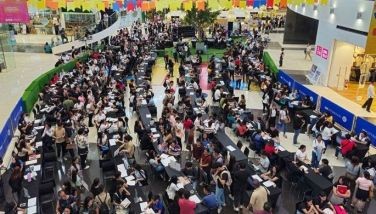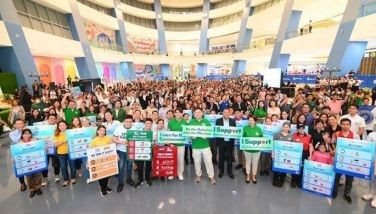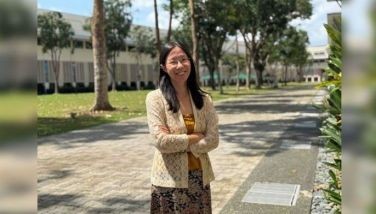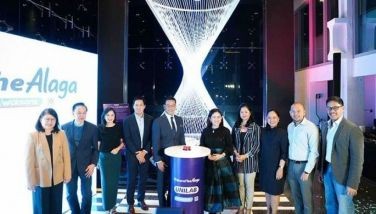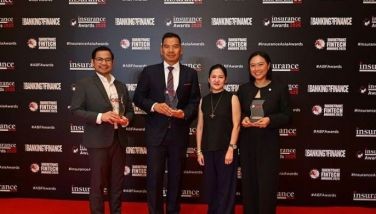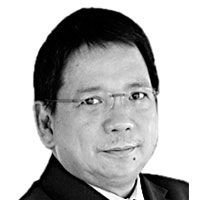Preserving tradition in a modern world

With Filipiniana fashion now going mainstream, you would think that the sector is overcrowded and competitors may be doing cut-throat pricing or commoditizing of such garments. Not at all. Prices are still decent so the manufacturer and the artisan weaver can make a sustainable income. This allows the supply chain to be sustainable, where the artisan gets a fair share and the retailer is also able to have a thriving business.
Such is the case for Anya Lim, a Cebu-based social entrepreneur who luckily has been doing well for the last 15 years. Anya established ANTHILL Fabric Gallery and I got to visit her when she was just beginning her enterprise. Over the years she met more community groups who are into weaving as a sustainable livelihood activity. She started with a community in Abra back in the day, even if it is a long stretch from Cebu. Today she has communities in Basilan, Lake Sebu and even in Mindoro.
I remember her making career outfits or uniforms for government personnel with touches of local weaves. It was perfect timing that government now requires Monday mornings to start with a flag ceremony where everyone must wear Filipiniana, modern or classic, both for men and women. Anya’s designs are usually sold to clients B2B or business-to-business, with government offices included. This is an ingenious way of partaking of the government procurement budget for MSMEs. This is a law that many MSMEs are not aware of. A big portion of government spend (at least 10 percent) is, by law, to be awarded to MSMEs to give them a substantial share usually only awarded to big companies who can bid, make a surety bond, etc.
That may be one of Anya’s trade secrets which is actually not a secret but a strategy for MSMEs who wish to sell to government. Get your papers ready, register in PHILGEPS and get a platinum membership. Even small service companies can participate in being service providers to government.
What I admire about Anya is her business strategy in handling her weaver partners and her communities. She established a system where the master (or elder) gets a premium IF they have an understudy. The 20 percent premium paid to the elders goes into a forced savings pool and a fund for planning for their future needs. I have never heard of this smart idea before. She believes the elders can pass on the traditions while getting a little extra, and the young girls get enthused in learning, too. Further, because many young people now wear modern Filipiniana, Anya shows the younger set how cool their creations are as they are worn by today’s fashionable young as seen in social media. That is the role of technology – it can show the young some inspiration from a medium they use and understand – TikTok, YouTube, Instagram and the like. A beautiful marriage of culture and technology is what keeps this next generation interested and able to continue tradition, albeit in a slightly modern way.
Anya was recognized with an APEC award some years ago and I personally got her award for her in Peru. She won over many other candidates from APEC economies and was cited in various press releases which made news, giving her more impetus to carry on. She also was exposed to other communities – making her ecosystem larger and better for the growth of the business. Today, she dreams of going global and she can do just that at the Osaka Kansai expo where we will showcase Women-Owned Enterprises (WOEs) together with WeConnect International, an NGO that connects about 200 global companies who have programs in Diversity in Procurement and WOEs get a leg up to be introduced to these global companies. We are off to the Osaka Expo to join the Cartier-sponsored pavilion from May 28 to 30, where business matching will happen for companies like Anya’s. They may be small but they are women-owned. WeConnect will certify both buyer and seller to ensure a fair deal and a sustainable one.
With the Japan visa ever so elusive, this is the right time for women entrepreneurs to prepare and join this expo as PHILWEN (our organization) and WeConnect will make sure we have our papers, tickets, hotels and meals ready. Anya has been blessed with developments such as this one because her purpose and mission is clear. She wants to promote culture, preserve heritage, teach the young and if she makes money in between, then it’s a win-win for her. She is placing people over profit in this case. She has been through many challenges but the Universe is watching over her because what she does is truly from the heart.
Anya is a symbol for resilience and perseverance of young social entrepreneurs who, despite challenges during the pandemic and challenges in unfair competition (many imports now just print the designs like our weaves), she will carry on. Knowing your sources, teaching them a few strategies in business and working to save and promote heritage is job number one. She so relates to a legacy project because both her grandparents (both sides) were from the rag trade. This propels her even more to continue with the work she started with weavers because she did not want to just buy and sell fabric. This is why ANTHILL has a meaning – Alternative Nest and Trading/Training Hub for Indigenous/Ingenious Little Livelihood Seekers. She bridges the generations – both hers and her weavers’ – and endeavors to attract a younger generation of both weavers and consumers. That will surely ensure the sustainability of cultural practices.
I invited Anya to my Good and Green podcast so she can further explain her efforts in providing income opportunities, ensuring the traditional crafts continue to thrive in a modern world. That is a wonderful mission, indeed. Good luck to Anya!!
- Latest
- Trending









